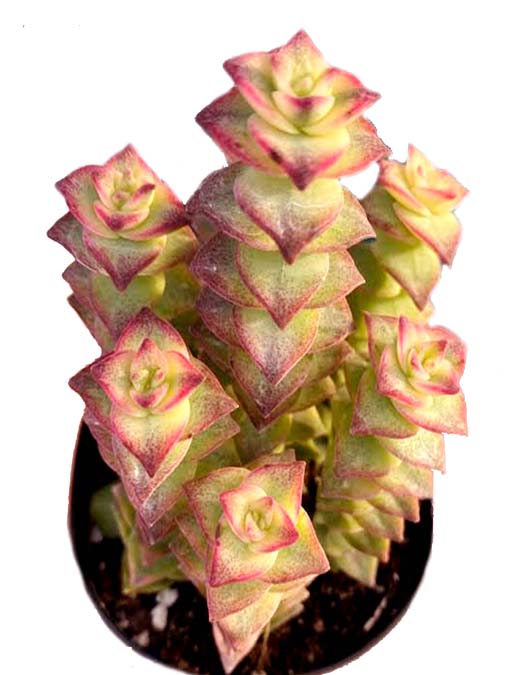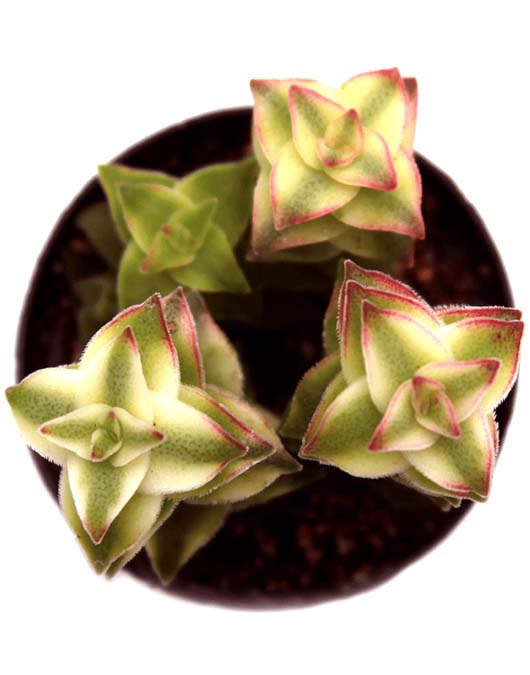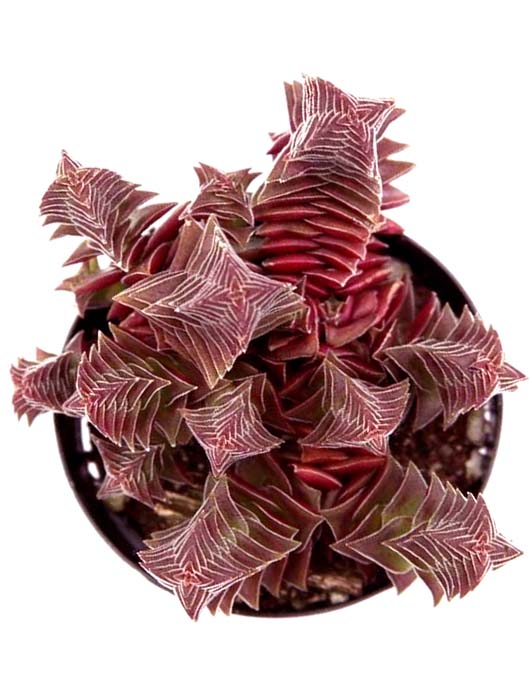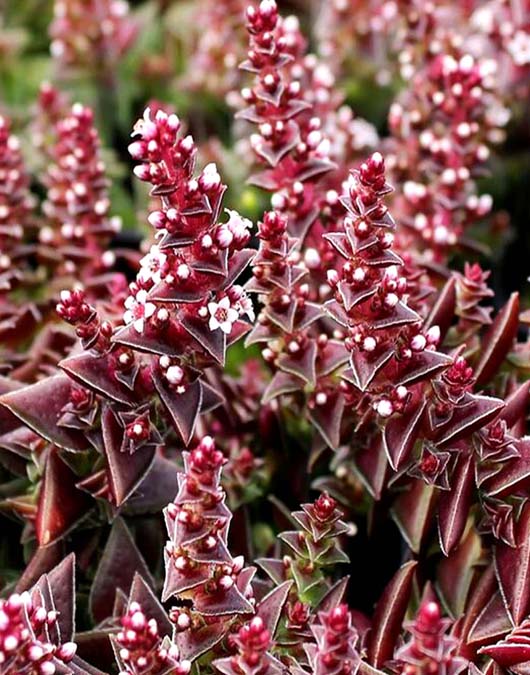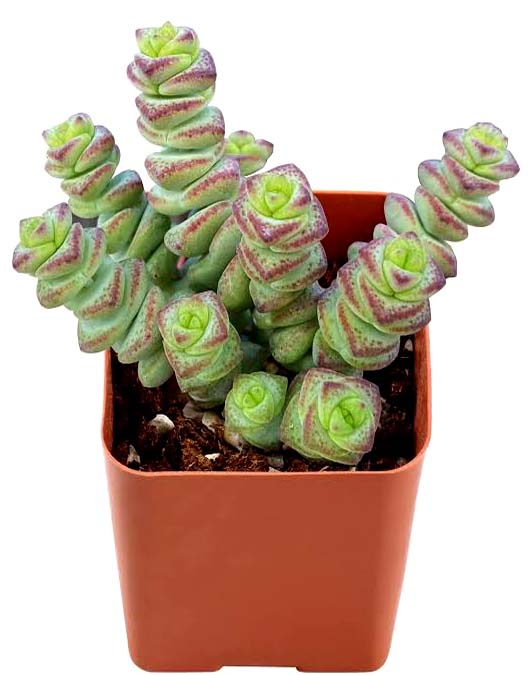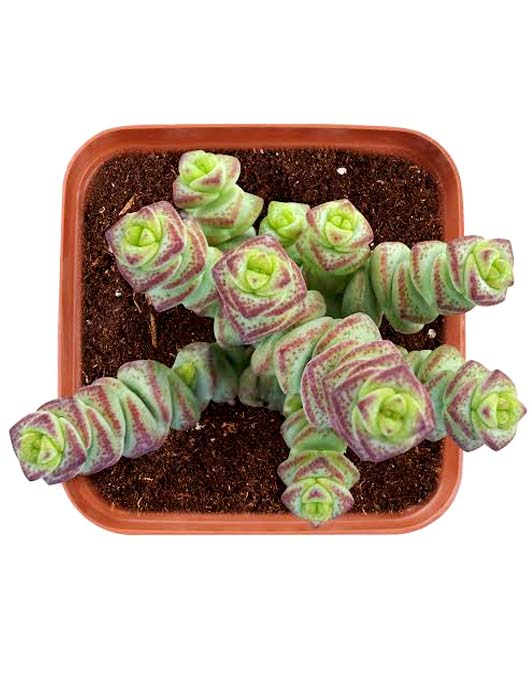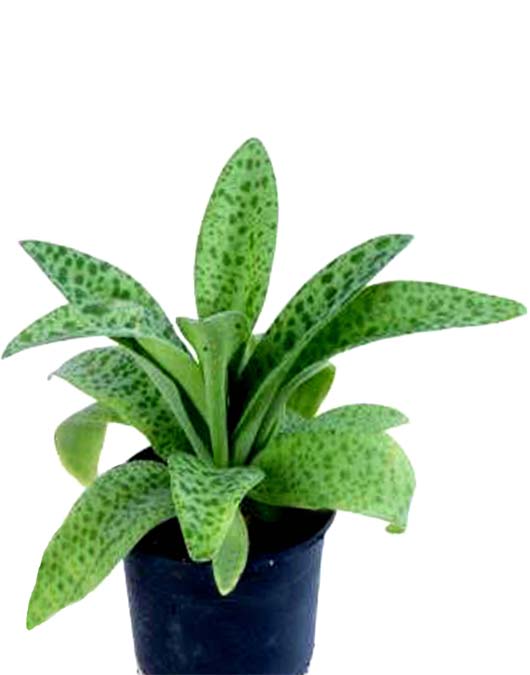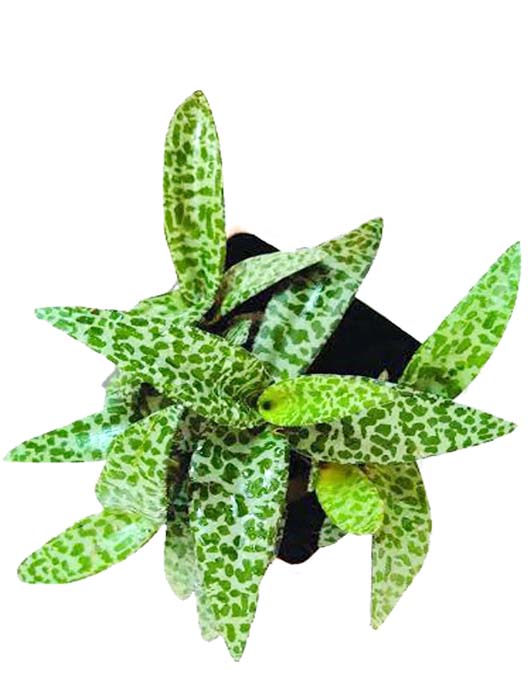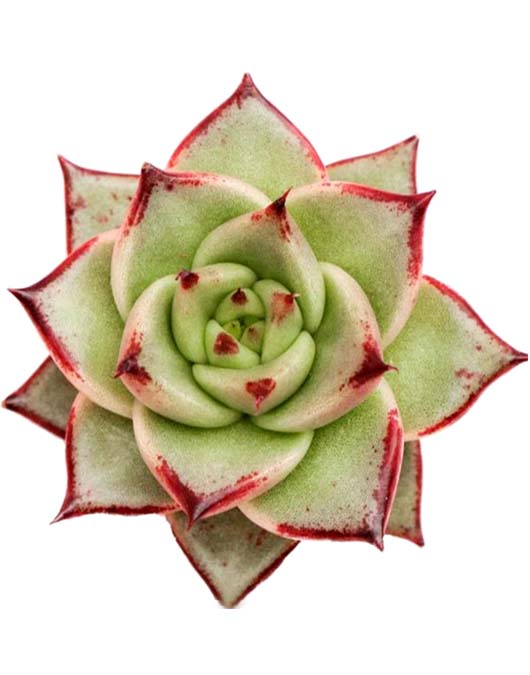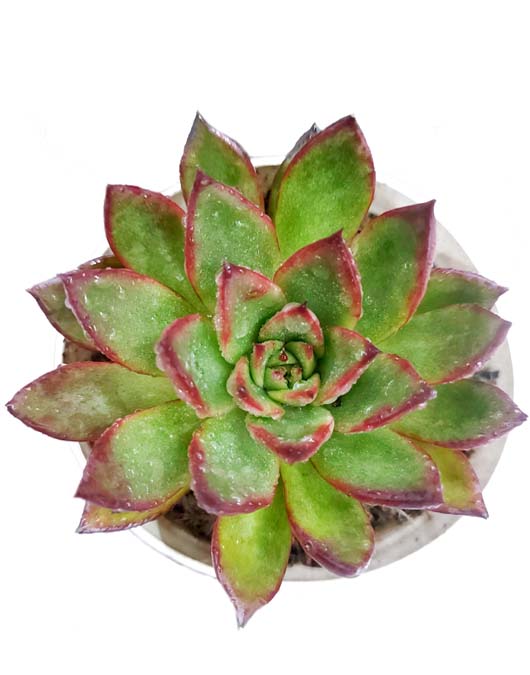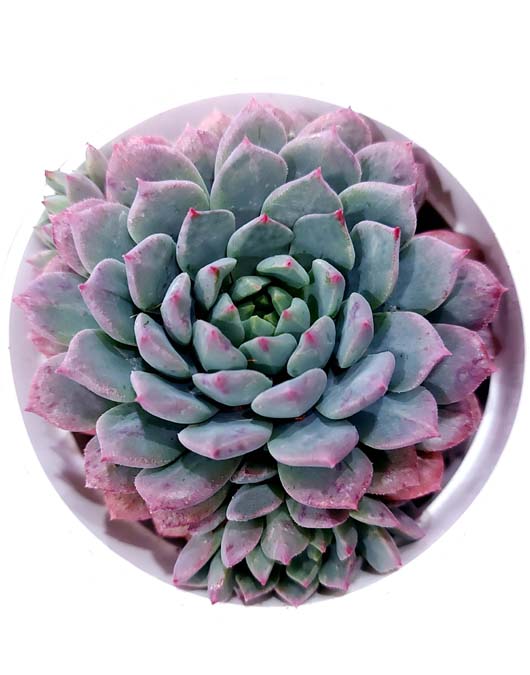- Thyrsiflora ‘Pagoda Village‘, also known as Crassula ‘Pagoda Village’, is a unique succulent that forms rosettes of leaves that change the color from green, red to purple. Flowers appear at the end of the up to 10 inches (25 cm) long pagoda chains. They are tiny, white, and up to 0.25 inch (0.6 cm) in diameter.
- The beefy flesh of Crassula Pagoda Village succulent looks like pagodas, which are strange and beautiful and of great value to watch.
- Watering for Crassula pagoda village is the same as in most Succulent plants. Follow the principle of “watering through”. Water the Pagoda once a week in the spring and autumn, keep the soil moist and wait until the soil is dry.
- Crassula Variegated ‘Money Maker’: A houseplant or landscaping plant in warm climates. This shrubby, branching succulent has thick stems and fleshy, obovate leaves.
- Unlike most jade plants, ‘Money Maker’ has soft, velvety hairs covering its leaves. It is a great plant for succulent beginners and can tolerate both low light and neglect. It usually grows to 3.0″ tall and spreads to 6.0″ wide, but it also takes well to bonsai pruning.
- Water needs only moderate watering when established Keep in direct sun, water in morning, and water only when soil is fully dry
- Plant will be given With Free Plastic Pot
- Belongs to the Crassula genus of succulents, the Crassula Baby Necklace is one of the most striking yet adorable succulents.
- Crassula ‘Baby’s Necklace’ Flat, button-like leaves encase the stems like beads on a string.
- This plant look extremely beautiful. If you talk about its matured height, Crassula Baby Necklace stays quietly small and grows only up to 12-inches. This way, it forms clumps of upright stems that emerge up to the same height.
- make sure to water the plant when the soil is dry to touch and do not water it again until it drains completely.
- Plant Will Be Given With Free Plastic Pot
- Bromeliad Plant are unusual houseplants perfect for adding a dash of color and texture to your spaces.
- Earth Star Most commonly used in open or closed Terrariums & dish gardens as a centerpiece.
- Bromeliad plant care is easy and requires no special tools or fertilizers
- The plant is prized for its thick foliage that grows in a natural rosette. Near the end of its life, a bromeliad plant may produce an inflorescence, or flower. whose form and color vary widely among each variety. The wide leaves are sword shaped or scoop-like and grow around a central “cup.” This cup catches water in the plant’s habitat.
- Plant will be given With Free Plastic Pot
- Ledebouria silver squill is one tough little plant. It hails from the Eastern Cape Province of South Africa where it grows in dry savannas and stores moisture in its bulb-like stems. The plants make interesting houseplants that are colorful and structurally unique.
- Ledebouria silver squill is one Tough Beautiful House Plant.
- Decorate your house, either interior or exterior with this indigenous species.
- It has leaves with spots all around. The leaves are thick and dense. The color of the spots varies from dark green to light brown.
- It requires low maintenance and care.
- Plant Will Be Given with Free Plastic Pot
- Echeveria agavoides ‘Ebony’ is a small evergreen succulent forming tight rosettes of fleshy, sharp-pointed, Light-green leaves adorned with vivid red margins turning chocolate to dark purple towards their tips
- Rare Echeveria Also Called Lipstick Echeveria
- Echeveria agavoides or “Lipstick Echeveria” is a species of flowering plant in the family Crassulaceae, native to rocky areas of Mexico, notably the states of San Luis Potosí, Hidalgo, Guanajuato and Durango.
- Echeveria Agavoides ‘Ebony’ is best known to be a beautiful looking succulent. As the plant matures you can expect it to reach up to around 30 cm (12″) in diameter.
- Plant Will Be Given With free plastic Pot
- Extraordinarily eye-catching, Echeveria agavoides ‘Lipstick’ is a small evergreen succulent forming crisp rosettes of fleshy, sharp-pointed,
- Echeveria agavoides ‘Red Edge’, also known as Echeveria agavoides ‘Lipstick’, is an attractive succulent that usually has a solitary rosette even when old.
- Echeveria agavoides ‘Lipstick’ – This rosette-forming succulent forms clumps of individual plants that are around 6 inches tall by 8 to 12 inches wide with apple-green leaves with vivid red-pink edges and a terminal spine reminiscent of an Agave.
- Echeveria agavoides Lipstick blooms in summer with red flowers tipped in yellow..
- Plant Will Be Given With Plastic Pot
Out Of Stock
EtonGreen Live Echeveria Azulita Succulent Plant
- Echeveria ‘Azulita’ is a succulent that forms small rosettes of icy blue leaves with powdery coating and attractive red tips.
- The alluring appearance of this variety is due in part to a thick coating of farina, which lends a powdery and delicate look to the chubby leaves. As it matures, the 5-inch wide rosettes will form small clusters, perfect for a standalone container, as an accent within an arrangement, or as a groundcover in a rock garden.
- Echeveria ‘Azulita’ offsets freely, and we mean freely, to form many small clusters. That means seemingly countless blue leaves with gorgeous red tips. Great for windowsill gardening or dish gardens. Forms arching flower spikes of bright golden-orange flowers.
- Its other needs are typical of most succulents, including porous soil with adequate drainage, and thorough watering only when the soil is dry. Take care to provide ‘Azulita’ with ample airflow, and avoiding pouring water directly into the rosettes to help avoid pests and rot.

